20 Tips for Running a Successful Giving Tuesday Campaign in 2023
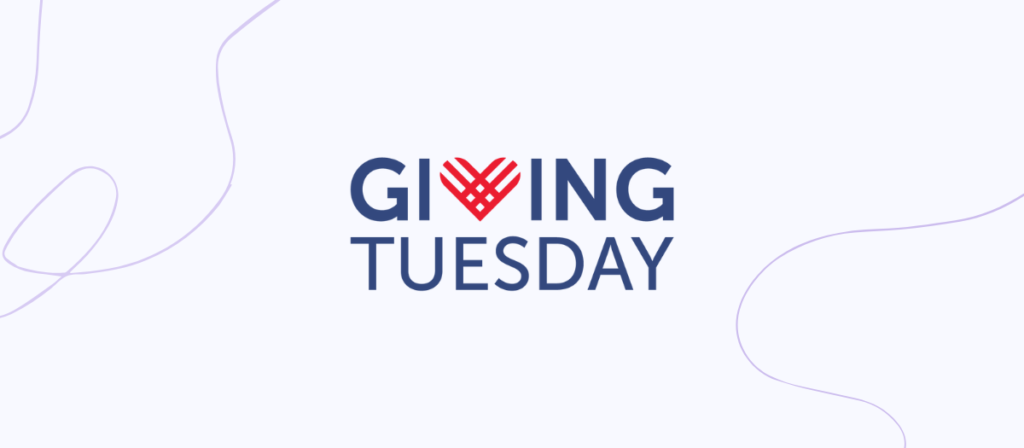

Giving Tuesday is the first Tuesday after Black Friday and Cyber Monday, and it’s the single biggest fundraising day of the entire year. It was conceived in 2012 by the 92nd Street Y in New York City as a balm against the chafing consumerism and indulgence that comes along with Thanksgiving overeating, door-crasher specials, and the dreaded Christmas shopping season.
Since then, nonprofit organizations participating in Giving Tuesday have raised billions of dollars for worthy causes worldwide, culminating in a record-breaking total in 2022 of $3.1 billion, a truly overwhelming display of generosity despite (or because of) ongoing political, environmental, and health crises.
In 2023, Giving Tuesday will be held on November 28, and the organization that runs it would love to see your team launch a Giving Tuesday campaign that pushes your programs to the next level. It’s a fantastic opportunity to have your usual messaging amplified worldwide through social media, email communications, direct mail, phone campaigns, and even word of mouth.
But remember, while they do provide some handy resources, including Giving Tuesday campaign examples, the Giving Tuesday organization doesn’t raise money on your behalf. They are a facilitator of the movement for greater awareness of giving to good causes. That means you’ll have to devise your plan for a campaign and execute it while riding worldwide momentum.
If you haven’t run a Giving Tuesday campaign before, this may sound a little intimidating. But have no fear; we’ve got you covered with 20 easy steps you can take to ensure your campaign is headed in the right direction.
See How To Use Keela to Run Fundraising Campaigns
Get a glimpse of how Keela smart tools help nonprofits to strategize, streamline, and automate their fundraising efforts, all in one place.
20 Steps to Running a Giving Tuesday Campaign
Some of the following steps are essential, while others are optional—try your best to tackle as many as you can, given the resources available to your team, but don’t overreach. A Giving Tuesday campaign that does a little less but does it well will be better for your nonprofit than a disorganized and incoherent fundraiser that hits every item on the list.
1. Join the #GivingTuesday movement
The first and easiest step toward GivingTuesday’s success is to sign up. While participating in Giving Tuesday is free, and you don’t have to register, connecting with your local chapter can give you access to ideas, opportunities, and more information about the big day. It’s also a great way to show that you and your organization are committed to participating on November 28.
2. Set Goals for Your Campaign
As with any fundraising campaign, it’s essential to set goals. Rather than just improvising and hoping for the best, goals allow you to aim your resources at a common target, assess how your campaign is going, and look back to measure success in order to make adjustments for next year.
Your goals should be reasonably specific without becoming too ambitious or ethereal. Rather than goals like “increase our audience,” try to define goals like “increase our social media audience by 10%.”
Every goal should be accompanied by key performance indicators (KPIs) that let your team understand what needs to be done to achieve success. KPIs are specific, numbers-based targets that allow you to accurately measure and compare your performance year over year so you can explain why you achieved (or failed to achieve) your goals.
The Giving Tuesday organization also has some great suggestions to help you set goals for your Giving Tuesday campaign.
3. Assign Roles to Your Team
Because Giving Tuesday happens on just one day, your team must understand their roles early on so that your campaign doesn’t suffer any delays. It’s essential to define responsibilities long before the day rolls around, paying particular attention to gaps in your human resources that may need to be filled by flexible existing staff, volunteers, or potentially hiring someone new.
In addition to ensuring that all roles are filled, it’s a good idea to prepare them well in advance of Giving Tuesday to align everyone toward the goals you outlined in step two. Don’t forget to hold a big team meeting either the day before Giving Tuesday or first thing in the morning to get everyone psyched up and ready to go.
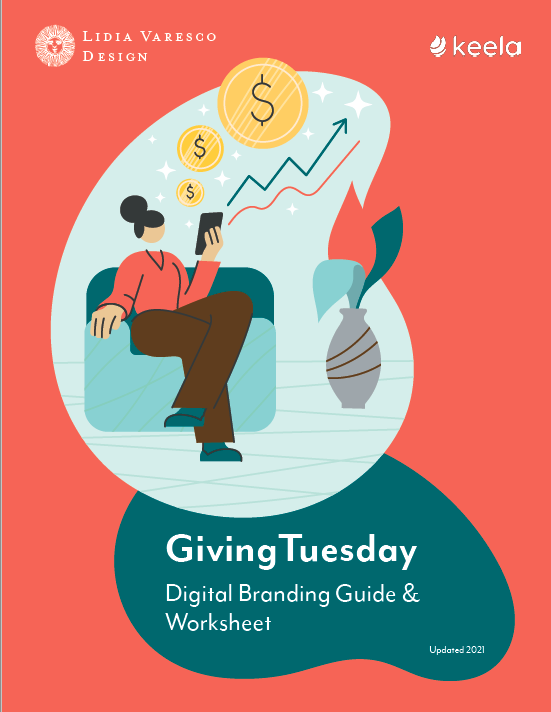

Create a Giving Tuesday Campaign that Stands Out
With this FREE Giving Tuesday Brand Guide, you can develop a campaign that truly resonates with donors and learn marketing tips to position your campaign for success.
4. Leverage Your Donor Base
Start priming your donors and supporters ahead of time so that they’re ready for the excitement and high pace of Giving Tuesday. There are lots of things you can do to get your supporters motivated: give them a look behind the scenes at your organization, host a pep rally either in person or via web conference, and above all, distribute plenty of information explaining how and why they should share your messaging on Giving Tuesday.
If you can provide concrete examples of what a contribution will do (e.g., a donation of $10 provides clean water for a month), be sure to pass that along as well so that new and existing donors alike can begin to understand their impact.
5. Engage Board Members and Partners
Donors and staff aren’t your only resources on Giving Tuesday. You’ve also got a board of directors stocked with influential people who can help spread the word to their (hopefully) wealthy friends and colleagues. Don’t forget to ask them for advice, leverage their connections, and convene a committee specifically targeted at Giving Tuesday strategies if they have time.
Likewise, corporate sponsors with whom you have existing relationships can also be a boon on Giving Tuesday—particularly if they have a high-profile brand with many followers on social media or a massive mailing list.
While donations from corporate partners are appreciated, amplifying your message to their large audience may be even more valuable. If you have a particularly engaged partner, you may consider proposing employee matching for your Giving Tuesday campaign.
6. Create a Donor Stewardship Plan
While Giving Tuesday is indeed a significant 24 hours period, the donors you capture will still be entering your pipeline like any other day, so you better be ready for them.
If you don’t have a solid donor stewardship plan and donor journey map that helps you welcome new donors, show gratitude and use their demographic data to help guide future campaigns, you’re squandering a windfall of opportunities.
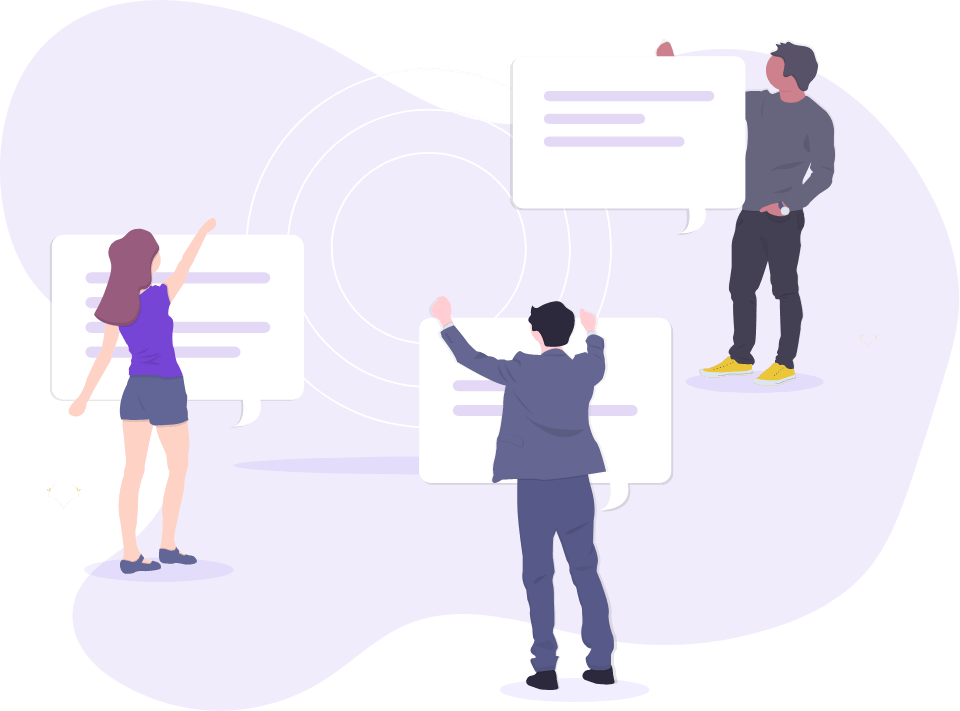

Build Your Nonprofit’s Donor Stewardship Plan
Stewardship activities are touchpoints for nurturing your donor relationships and help to increase your donor retention rate. With this FREE template, you can map out your donor stewardship plan.
7. Optimize Your Donation Forms
You can take a horse to water, but you can’t make him drink if he can’t find the donate button. Mixed metaphor? Maybe. You’re going to have eager new donors bombarding your website, but if your donation form is too complicated, too hard to navigate, or just plain non-functional, you’re going to lose a lot of donations before your campaign is rolling.
Well before Giving Tuesday, make sure that your donation form is optimized and that everything is where it should be on your donation page.
8. Use Technology to the Fullest
As if you and your team weren’t busy enough already, Giving Tuesday tends to reach such a fever pitch of activity that it can be tough to keep all the balls in the air. Avoid dropping them with a donor management software (DMS) that organizes your campaign, incoming donors, their information, and your resources.
You’ll need a DMS with nonprofit project management features—one that can take care of some of your clerical and administrative. Need help deciding on a platform? We’ve got you covered.
9. Set up a Peer-to-Peer Fundraiser
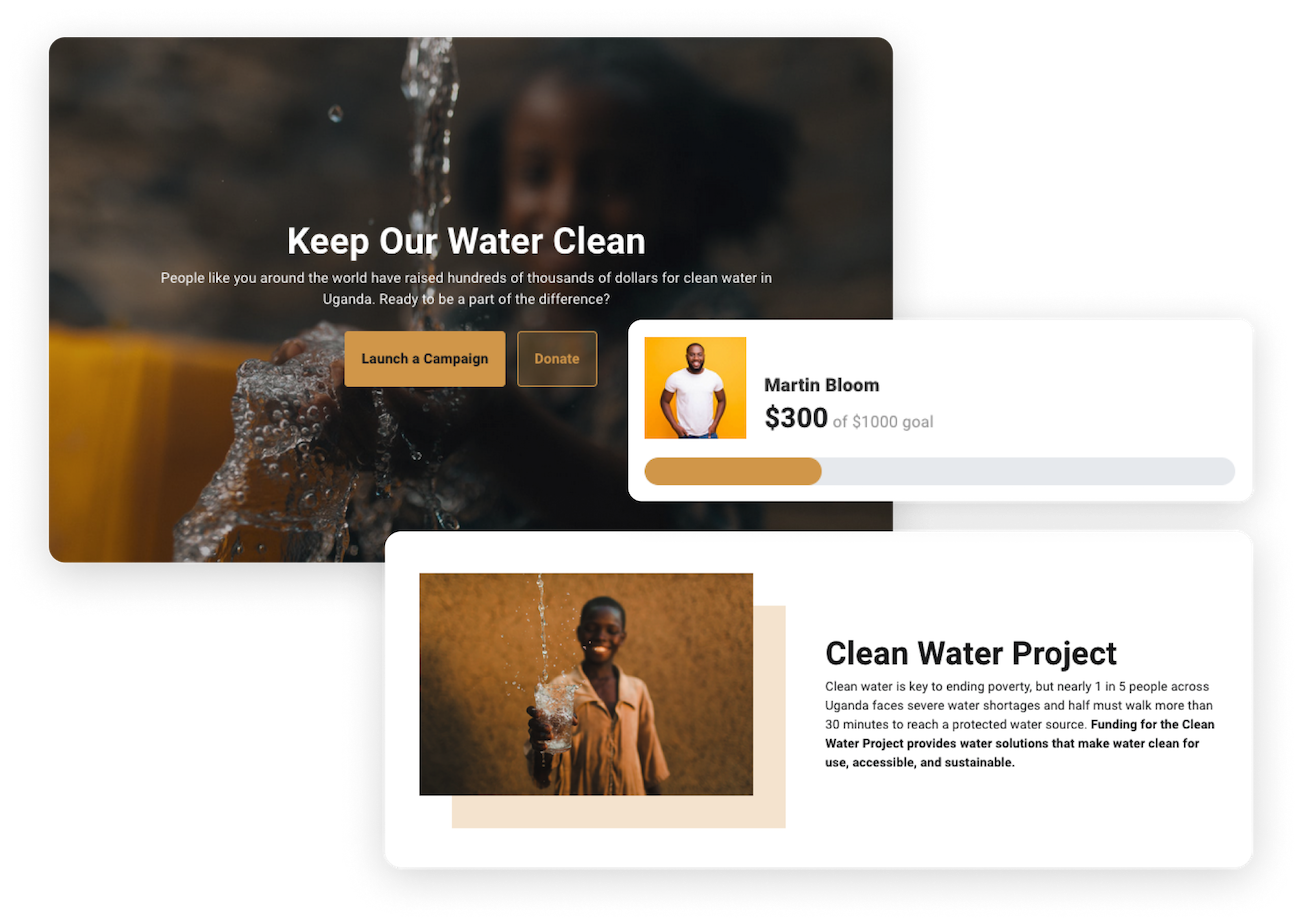

A peer-to-peer fundraiser allows your existing supporters to fundraise on behalf of your organization. You get them set up with a peer-to-peer fundraising platform, talking points, and motivation; they spread your fundraising message to their networks.
Peer-to-peer fundraisers are perfect for one-day events like Giving Tuesday because they amplify urgency and hopefully drive donations. Plus, when your supporters fundraise for you, they cosign your mission, which builds trust with new donors. It’s also a great way to get supporters involved who want to help but don’t have a lot of money to give from their own pockets.
With Keela’s Peer-to-Peer fundraising tool, you can reach and engage a wider network of donors and supporters. This tool allows your supporters to fundraise on behalf of your nonprofit. Using Keela’s highly customizable peer-to-peer fundraising pages and optimized donation forms, your supporters can spread the word about your campaign, raise money and track their progress. Such a collective effort goes a long way to helping your organization meet its fundraising goals.
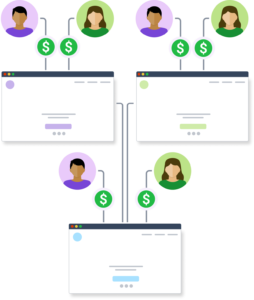

Reach More Supporters with Keela’s Peer-to-Peer Fundraising Tool
Your supporters can now fundraise with you! Using Keela’s NEW peer-to-peer fundraising tool, supporters can create and share customizable fundraising pages to raise money for your nonprofit’s campaigns.
10. Run a Facebook Fundraiser
Like a peer-to-peer campaign, a Facebook fundraiser spreads your message far and wide, finding people who might not normally have heard about your organization. Plus, it’s super easy to set up and completely free to use. Just make sure you understand the limitations of the tool and make it a part of your Giving Tuesday campaign, not the whole thing.
11. Launch an Email Marketing Campaign
Giving Tuesday is the perfect time to execute an email marketing campaign that preps your audience for the big day in advance, encourages them to give, and reports your success afterward.
Planning an email campaign manually can be difficult and prone to error, so use a smart tool like Keela Automation to make sure your emails are sent to the right people at the right time. It’s also a good idea to segment your audience into discrete groups and personalize your communication to their preferences to maximize engagement.
Keela Intelligence makes this task even easier. And if you need a push in the right direction when it comes time to craft content, check out these examples.
12. Send Direct Mail
Direct mail is not dead! Although most Giving Tuesday activities happen online, several people out there may want to participate outside of the internet. This is especially true for nonprofit organizations with older audiences.
Direct mail is also great because it ends up at people’s homes and businesses and is much harder to ignore than a status update or an email. Like many of the other suggestions on this list, it’s a good idea to make direct mail a facet of your Giving Tuesday campaign rather than your entire strategy.
13. Run a Text-to-Give Campaign
Snail mail isn’t the only way to get people to give offline. Texting is huge, has been for years, and will continue to be in the future, so why not use it to raise money? A quick text to supporters on Giving Tuesday is a fantastic way to motivate donors who may be away from their computers or avoiding social media. Just make sure your systems are ready for it.
14. Share Impact Stories
Storytelling is one of the best ways to connect with your audience on an emotional level. So, in the lead-up to Giving Tuesday, share some impact stories that show what your organization has been working on, what you plan to do in the future, and the positive difference it will make in the world.
Be sure to feature real people and true stories and tailor them to your audience and platform: Twitter isn’t great for long, drawn-out tales; save them for long-form emails or make a video for YouTube and Facebook.


Share Your Impact Story with this FREE Toolkit
Use this toolkit to discover the key elements of a good impact story and learn how to write yours. Plus, you will get access to a template so you can get a head start on your writing.
15. Go Live on Giving Tuesday
If you have a large audience on a platform with a streaming video tool, like Facebook and Instagram), don’t hesitate to go live on Giving Tuesday. Your face (or the face of your executive director) and a few honest words of encouragement can make a big difference for your fundraising total.
Live streaming your campaign is also a great way to help your supporters feel involved. It allows them to interact with you directly. Deliver messages of hope first thing in the morning, then provide live updates throughout the day to keep the momentum going. And don’t forget to add a donate button.
16. Use the Right Hashtags
Since so much of your Giving Tuesday campaign is happening online, don’t forget to use the right hashtags to allow potential donors to find your posts and encourage your supporters and peer-to-peer fundraisers to use them as well.
#GivingTuesday is the main tag, but there are also regional versions for campaigns in other countries, such as #GivingTuesdayCA in Canada. #UNselfie is also an excellent way for users to show their support for Giving Tuesday.
17. Say Thank You
Showing gratitude is the very best way to ensure that the new donors you acquire on Giving Tuesday stick around for future fundraising campaigns. Say thank you sincerely, using a variety of communication channels to everyone who contributed to your Giving Tuesday success: donors, supporters, staff, board members, and partners. Use the opportunity to welcome new donors and consider asking for feedback to help improve next year’s campaign.


Perfect Thank You Letters: The Complete Guide
We know creating a thank you letter or email from scratch can be a challenge. We create a guide and 7 customizable templates to thanks donors, volunteers, sponsors, and more!
18. Analyze Your Data
Once you’ve run your campaign, added new donors, processed donations, and collected data from all of your interactions, it’s time to evaluate your performance. Look at how your numbers compare to your KPIs (see step two) to assess your success or failure. Then dig deeper with some simple data analytics techniques that can reveal insights about your organization’s Giving Tuesday campaign.
It’s also a good idea to gather feedback from your team for use in future campaigns, such as your end-of-year fundraising just around the corner.
19. Report Your Results
By this point, you have a pretty clear picture of what happened on Giving Tuesday, how your team did, and the difference your organization will make in the future. Now it’s time to compile it all into a fundraising report.
Your fundraising report is useful for showcasing your hard work to your board, partners, sponsors, incoming staff, and more. And Keela’s smart tools can help you build your report automatically.
20. Get Some Rest
The rush of a Giving Tuesday campaign can be overwhelming for your team, so be sure to set aside time for them to rest and recharge. That means reducing hours, avoiding early morning meetings or late night work sessions, and leveraging mindfulness resources to improve your team’s wellness and productivity.
Congratulations, you made it through Giving Tuesday 2023!
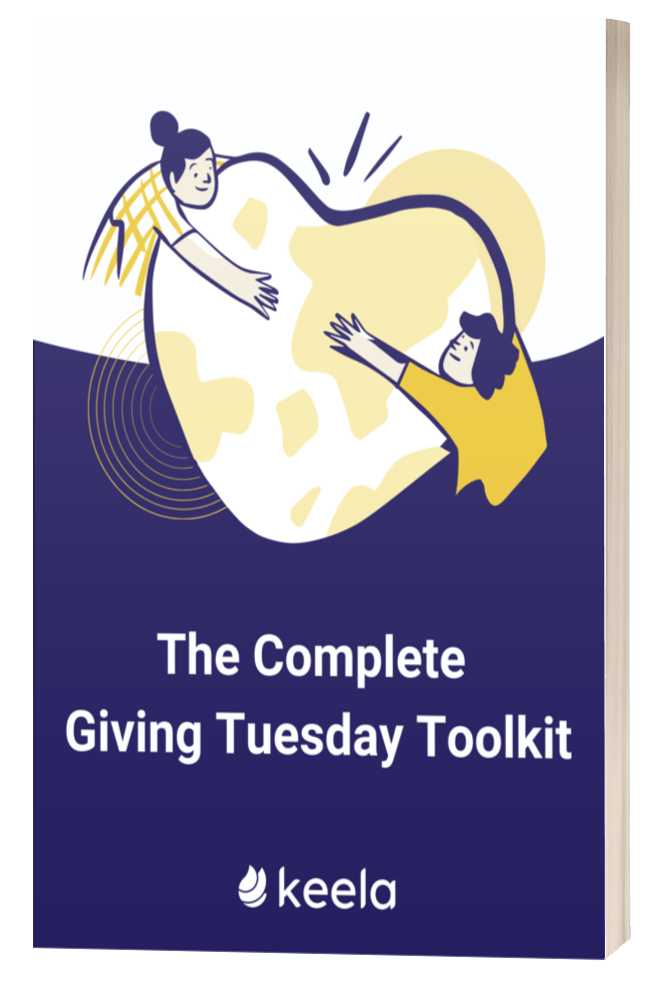

Are you ready for Giving Tuesday?
This complete campaign toolkit will help you set up donation pages, events, social media, and email campaigns and includes handy timelines and templates to keep you on track.


